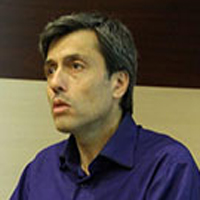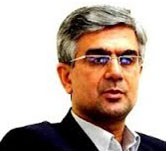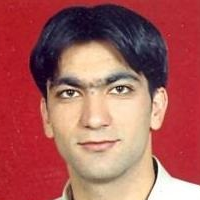Effect of two acute physical activity protocols on selective attention of children with attention deficit/hyperactivity disorder
Attention Deficit / Hyperactivity Disorder (ADHD) is a developmental disorder in attention, impulse control, restlessness, and behavioral management. It is the result of major sensory, motor, or emotional neurological disorders and is one of the most common disorders. Neurobehavioral disorders in elementary school children have affected a large number of children in the world. This disorder is caused by the cessation of brain growth in the development of the central nerve. The most structural differences in these patients are in the prefrontal cortex, which is an area affecting executive functions. Executive functions are defined as the set of superior cognitive abilities that drive other cognitive activities and are the executive director of brain processing. This set includes components such as planning, flexibility, self-control, response inhibition and attention (including its selective aspect). Among these, selective attention refers to the process of rapid selection of more relevant stimuli than less relevant stimuli and also inhibition of irrelevant stimuli. Researchers believe that attention deficit disorder is the biggest problem for these children, and for this reason, parents and teachers complain that these children do not listen to other people's statements, do not concentrate, leave things unfinished, and are easily distracted. In general, selective attention has two main functions, which include the ability to change attention and search for connections and dependencies. This issue can play a decisive role in completing homework and learning process. The Stroop test is a common neuropsychological method used to assess executive functions, selective attention, and concentration. A variety of pharmacological and non-pharmacological treatments are used to treat and reduce the symptoms of ADHD, among which pharmacotherapy is used as the first line of treatment for this disease. However, experts seek alternative therapies for three main reasons: side effects, the short-term effect of the drug on the user, and its focus only on the child's behavioral symptoms. Among the treatments that are used to treat this disorder, we can mention physical activity. However, due to the limitations of participating in physical activity, the study of the effect of training methods on the intensity, duration and different qualities of these patients has received more attention than researchers; The aim of the present study was to investigate the effect of two acute physical activity protocols with different training qualities on the selective attention of children with attention deficit / hyperactivity disorder.
This research is quasi-experimental, is among the applied research and in it a pre-test-post-test design with a control group has been used. The statistical population of the study included all children aged 8 to 12 years with ADHD referred to Atieh Derakhshan Mental Psychology Clinic in Tehran. In order to select a sample from the statistical population and to diagnose the disorder in children referred, the Connors parent questionnaire and clinical interview were used. Finally, 24 children with combined ADHD were selected in a targeted and available manner that met the required conditions and were randomly divided into three groups of intense interval activity, cognitive physical activity and control group (8 each). Researcher-designed physical activity protocols were designed for both intense interval activity and cognitive physical activity and were first piloted on a smaller scale. In order to equalize the intensity of activities and control the conditions, the two factors of maximum heart rate and RPE were monitored and examined. Intensity for both activities was considered to be 90-80% of the maximum heart rate. Each protocol included a 15-minute program including 5 minutes of warm-up, 5 minutes of activity, and 5 minutes of cooling. Intense interval activity consisted of 5 exercise blocks and cognitive physical activity consisted of three exercise commands. The data were analyzed by dependent t-test to examine within-group changes and one-way analysis of variance (ANOVA) was analyzed by SPSS 20 software to examine the differences between groups. Significance level was considered as less than 0.05.
The results showed a significant decrease in reaction time (P = 0.010) and error (P = 0.002) subtests in the intense interval activity group, which is the result of significant effect of this activity on selective attention in children with ADHD. But there was no significant difference in the groups of cognitive physical activity (P = 0.058) and control (P = 0.019). Also, a significant decrease in the time of interference was observed in the group of cognitive physical activity (P = 0.010), which also indicates the effect of this activity on facilitating the performance of these children. Regarding this subtest, no significant difference was observed in the groups of intense interval activity (P = 0.159) and control (P = 0.743). In the intergroup comparison, the results did not show a significant difference between the subtests in the research groups.
Overall, it was shown that participation in acute and short-term physical activity protocols compared to control conditions can have beneficial results on selective attention in children with ADHD, and it was also shown that physical activity in Quality of training and cognitive load are not the same, can also have different effects and results for these patients. If participation in intense interval activity with more emphasis on improving the selective attention factor and cognitive physical activity was associated with facilitating performance, these protocols can be considered as short-term activities before the child participates in the learning process; Of course, generalization of these results requires further studies in this area
- حق عضویت دریافتی صرف حمایت از نشریات عضو و نگهداری، تکمیل و توسعه مگیران میشود.
- پرداخت حق اشتراک و دانلود مقالات اجازه بازنشر آن در سایر رسانههای چاپی و دیجیتال را به کاربر نمیدهد.





